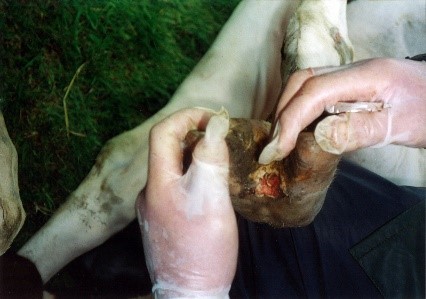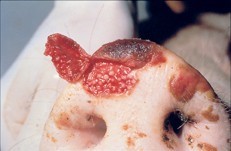Foot-and-mouth disease (FMD) is a highly contagious animal disease that affects all cloven-hoofed animals including cattle, sheep, goats, camelids, deer and pigs. Cloven-hoofed animals are those with a split toe. It does not affect horses. (Camelids include alpacas, llamas and camels).
There have been no reported cases of FMD or LSD in Australia, Timor Leste or Papua New Guinea.
Foot-and-mouth disease (FMD) has been detected in several provinces in Indonesia, including Bali, and there is an increased risk of an incursion into Australia. The most recently infected province is Southeast Sulawesi. However, the Indonesian Government is reporting 11 provinces with no active cases (South Sumatra, Riau Islands, South Kalimantan, Central Kalimantan, West Kalimantan, East Kalimantan, North Kalimantan, Bali, Jakarta and Lampung and the Belitung islands). Note that this does not necessarily mean that infection is not present in these provinces.
There is an active FMD vaccination program ongoing in Indonesia to reduce the spread of FMD.
This information is correct as of December 2022.
Key points:
- FMD virus is carried by live animals and in meat and dairy products, as well as in soil, bones, untreated hides, vehicles and equipment used with these animals. It can also be carried on people’s clothing and footwear.
- Australia has detailed, well-rehearsed FMD response plans and arrangements in place. Government’s and industry’s preparedness is continuously reviewed.
- It is critical that producers be aware of what Foot-and-mouth disease looks like and report any signs of the disease observed in their cloven-hoofed animals immediately to the Emergency Animal Disease Hotline on 1800 675 888 or their local veterinarian.
LOOK
Know the signs of Foot and mouth disease (FMD) and what to look out for in your cloven-hoofed animals, and who to contact if you spot anything unusual.
- Cattle, pigs, sheep, buffalo, deer, camelids and goats may show fever, be drooling and will be reluctant to move.
- These animals can suffer from blisters on the mouth, snout, tongue, lips or between and above the hooves on the feet.
- Blisters may be intact or ruptured, exposing raw tissue which is very painful.
People in northern Australia need to be particularly vigilant. Not only do they need to check their livestock but if signs are seen in feral pigs or water buffalo, immediate action needs to be taken.
Report any signs of the disease observed in your cloven-hoofed animals immediately to the Emergency Animal Disease Hotline on 1800 675 888 or to your local veterinarian.



Printable factsheets for species
FMD Factsheet for Sheep and Goats
Resources for producers
Resources for veterinarians
FAQ
What is the current situation?
In May 2022 an outbreak of foot-and-mouth disease (FMD) was reported in cattle in Indonesia. Cases were first detected in April and in July 2022 the disease was reported in Bali.
Australia has offered assistance to Indonesia to combat the outbreak in East Java and Sumatra. This is in addition to assistance already being provided to combat lumpy skin disease, which was recently detected in Sumatra.
The Department of Agriculture, Water and the Environment (DAWE) has reviewed import permits for animal products from Indonesia that may carry FMD and suspended those of concern.
It has also advised livestock industries to be alert, raised awareness at the border, particularly in the north, provided advice to state and territory governments, and continues to liaise with counterparts in Indonesia.
Australia has an overseas FMD vaccine bank and vaccine is available for use if there is an incursion in Australia.
What is Foot-and-mouth disease disease?
- FMD is a highly contagious animal disease that affects all cloven-hoofed animals including cattle, sheep, goats, camelids, deer and pigs. Cloven-hoofed animals are those with a split toe. It does not affect horses. (Camelids include alpacas, llamas and camels).
- FMD virus is carried by live animals and in meat and dairy products, as well as in soil, bones, untreated hides, vehicles and equipment used with these animals. It can also be carried on people’s clothing and footwear.
- FMD virus can survive in frozen, chilled and freeze-dried foods including meat and dairy products.
- The disease is caused by a virus from the Picornaviridae family.
- There is no threat to human health from this disease. FMD is not the same as hand-foot-and-mouth disease which is a common disease in young children.
How can FMD be spread?
FMD can be spread through close contact between animals and can be carried on animal products, equipment, people’s clothing or by the wind.
Where have outbreaks been seen before?
- FMD outbreaks are common in Asia, the Middle East, South America and parts of Africa.
- An ABARES report (in 2013) estimated that over a 10-year period there would be severe direct economic losses to the livestock and meat processing sector from an outbreak of FMD. These losses ranged up to $52 billion over 10 years at a 7% discount rate. An update to this estimate conducted in 2022 found the same large multi-state outbreak would now have a direct economic impact of around $80 billion (in 2020-21 dollars and with a 3% discount rate).
- Outbreaks of FMD in the United Kingdom in 2001 and 2007 resulted in millions of animals being destroyed and billions of dollars of revenue lost. The impacts of these outbreaks were felt way beyond farming communities.
- Taiwan reported several outbreaks beginning in February 2009.
- In 2010, both Japan and the Republic of Korea experienced large FMD outbreaks which required extensive programs to control the disease. The 2010–11 Korean outbreak is estimated to have cost the government some 3 trillion won, equivalent to about $US 2.7 billion.
PREPARE
With Foot-and-mouth disease (FMD) on our borders its vital that you and your farm are prepared.
All livestock owners should have stringent biosecurity measures in place on their property, including accurate records of livestock movement.
· Ensure your farm biosecurity plan is up-to date and equipped for an outbreak.
· Have a biosecurity plan ready
· Take EAD training courses
Resources
FAQ
How can you reduce the risk?
Livestock owners
Feeding meat, animal products and imported dairy goods to pigs is illegal throughout Australia. This practice is known as swill feeding and can provide a high-risk pathway for FMD to enter Australia.
Livestock producers must be alert for signs of disease in their animals. If animals are showing signs of illness that are consistent with FMD, this needs to be reported as a matter of urgency to the Emergency Animal Disease Hotline on 1800 675 888 or to your local veterinarian.
Northern Australia
- Do not move live animals, meat and dairy products, untanned hides or skins, other animal products or soil between the Torres Strait Protected Zone and the Torres Strait Permanent Biosecurity Monitoring Zone or to mainland Australia without a permit and an inspection by a Department of Agriculture, Water and the Environment biosecurity officer.
- Keep a watch for planes or boats in your region that may be carrying animals or animal products onboard. Also keep watch for food and garbage washed up on the beach that could potentially be contaminated with the virus. If you see any of these threats, contact a local ranger or your nearest Northern Australia Quarantine Strategy office.
What precautions need to be taken regarding FMD when travelling to Australia?
Everyone has a role in preventing harmful pests and diseases from entering Australia. Its important to keep in mind when travelling to Australia:
- If you’re travelling to Australia, importing goods or ordering goods through the mail, be aware of what is permitted entry to Australia. You can do this by checking the website at awe.gov.au/travelling/bringing-mailing-goods. Some foods, animal and plant products can carry pests or diseases that you won’t know are there
- It is illegal to bring frozen, chilled and freeze-dried foods, including meat and dairy products, into Australia without an import permit
- People who have visited a farm or been in contact with animals in infected countries need to declare this when arriving in Australia. Ensure all footwear, clothing and equipment is free of mud, animal manure and mucus.
Who should you call if you notice anything unusual?
It is critical that all livestock owners here in Australia know what FMD looks like, and that they check their animals regularly. If you suspect any signs of FMD it must be reported to the Emergency Animal Disease Watch Hotline on 1800 675 888 or a local veterinarian immediately.
BE AWARE
Know the impacts you may face if FMD invades your space
FMD is considered one of Australia’s greatest biosecurity risks. An incursion would have severe consequences for Australia’s animal health and trade. Severe economic losses would be felt with restrictions being placed on both domestic and international markets for live animals, meat and animal products.
The impacts of FMD may be felt well beyond agriculture.
FAQ
What would an outbreak look like?
An uncontrolled outbreak could lead to immediate closure of our meat export markets for more than a year. Control costs have been estimated at more than $80 billion dollars over 10 years. Even an isolated, rapidly controlled outbreak could cost several billion dollars to eradicate.
The most important thing to do if a FMD outbreak occurs is to check your cloven-hoofed animals regularly for signs of the disease, and to comply with the instructions of your state government biosecurity personnel, who will be working hard to contain and eradicate the disease.
What arrangements are in place to deal with an outbreak?
Australia has arrangements in place to manage animal disease outbreaks. The AUSVETPLAN Foot and mouth disease response strategy describes the nationally agreed approach to control and eradicate FMD if it occurs in Australia.
The Emergency Animal Disease Response Agreement (or EADRA) is an agreement between all state and territory governments, the Australian government and livestock industry bodies which enables a quick and effective response to an EAD incident, while minimising uncertainty over management and funding arrangements.
DAWE has also reviewed import permits for animal products from Indonesia that may carry FMD and has suspended those of concern.
In addition, it has heightened awareness at the international border, and provided advice to industries, and state and territory governments. The department has also offered assistance to Indonesia to help control the disease in Java and Sumatra.
Who pays the cost of the disease response?
The response to a disease outbreak conducted under the EADRA is cost-shared, meaning governments and industries split the costs of the response based on a pre-agreed formula.
Impact Resources
LEARN MORE FROM THE EXPERTS
On July 20th, four key experts spoke on Australia’s Foot and Mouth Disease (FMD) and Lumpy Skin Disease (LSD) response so far and gave their firsthand insights into what’s happening in Indonesia and what would happen if these diseases arrived in Australia.